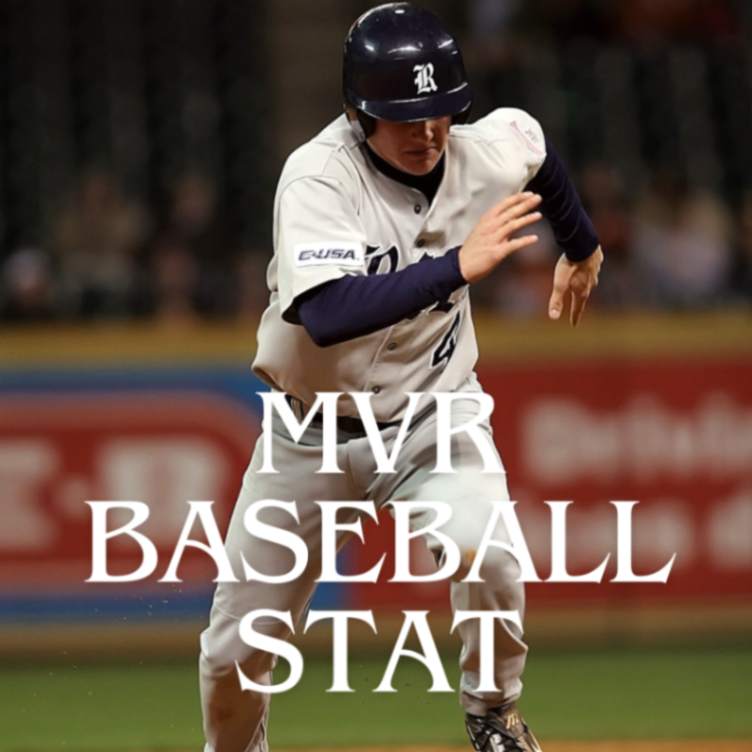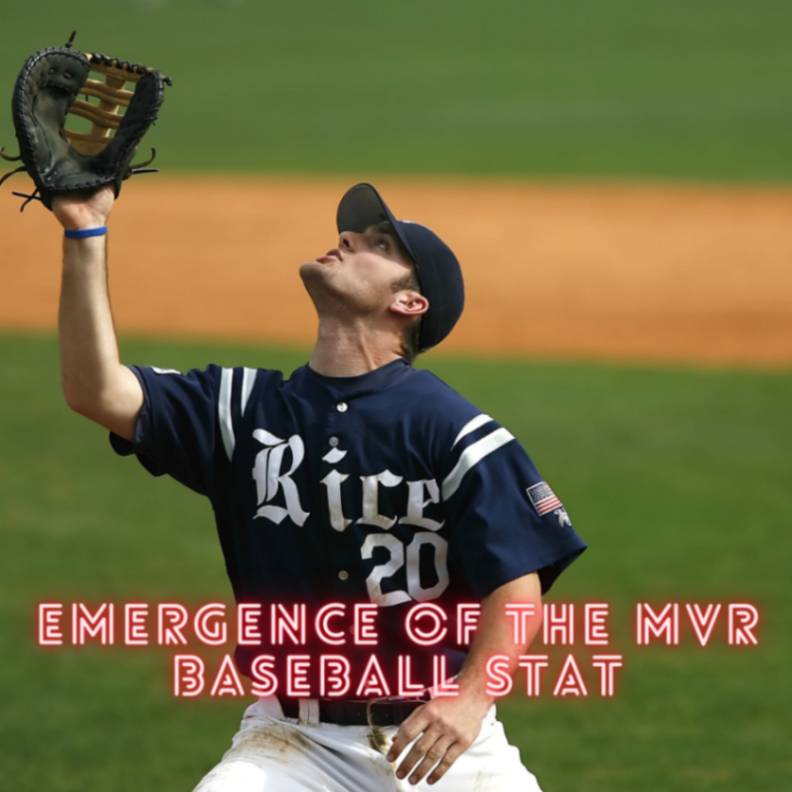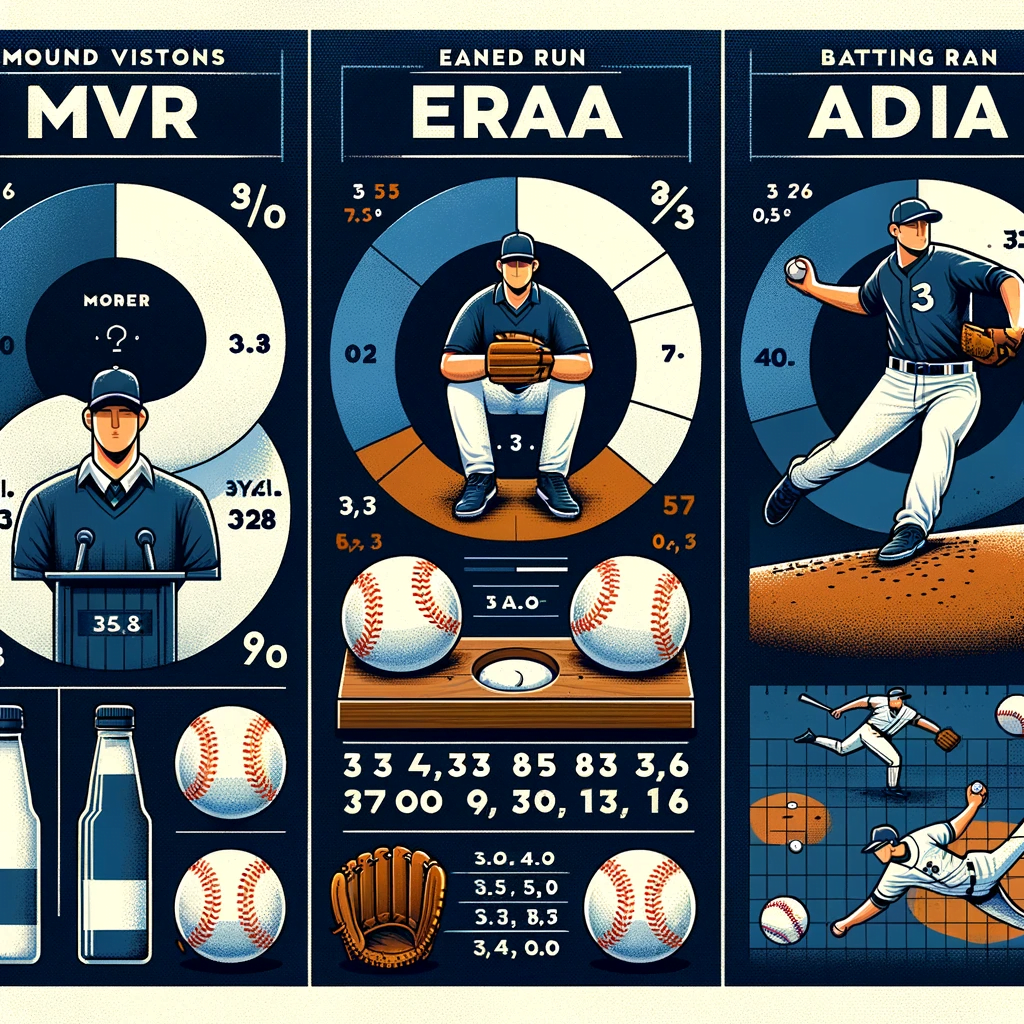
Introduction to MVR Baseball Stat: Decoding the Numbers that Shape the Game
The Power of Statistics in Baseball’s Playbook
Baseball isn’t just a game; it’s a numbers game where each statistic holds a story waiting to be told. Every hit, strike, and run is a brushstroke on the statistical canvas, offering insights into the game’s very heart. Understanding these numbers is crucial for fans and professionals alike as they decode strategies, player capabilities, and the overall narrative of baseball. The MVR baseball stat has become a notable addition to this statistical lineup, offering a fresh perspective on the game’s strategic elements.
Unveiling the MVR Baseball Stat: A Strategic Game-Changer
what is mvr in baseball? Baseball’s MVR statistic is revolutionary because it changes the emphasis from raw strength to strategic skill. Baseball uses a system called Mound Visits Remaining (MVR) to incorporate strategy right into the flow of the game. The distance travelled on a home run or the pitch’s speed are not relevant to this statistic. Rather, it maintains track of how many times a team takes the mound without switching pitchers. It’s a strategic play that increases the tactical depth of the game by forcing teams to make the most of every visit and emphasising the significance of making decisions on the field.
MVR Baseball Stat: A Lens on Player Performance and Endurance
Baseball MVR is a crucial tool for evaluating a player’s performance, especially that of the pitcher. It’s a measure of a pitcher’s resiliency and the team’s faith in that resiliency, not simply a simple count. Knowing the baseball statistic known as the Mean Value Ratio (MVR) gives us an idea of how players perform when under duress and under extreme scrutiny during key times. MVR in baseball measures more than just the number of visits; it also accounts for the strategic interactions between the dugout and the mound, between counsel and independence, and ultimately between win and defeat.
These are the times when MVR truly shines, mvr baseball meaning is to demonstrate to us how to win the game as well as how it’s played.
Exploring the MVR Baseball Stat: The New Strategic Component of Baseball
Defining the MVR Baseball Stat: The Basics
MRV meaning baseball is Mound Visits Remaining, a relatively recent addition to the statistical family of baseball. It’s a number that keeps track of how many times a team can visit the pitcher’s mound during a game without the penalty of changing the pitcher. The introduction of the MVR baseball stat has brought a new strategic twist to the game, where every decision to approach the mound is critical. Teams must use these visits wisely, balancing the need to provide guidance with the strategic advantage of keeping a pitcher in play. The MVR baseball stat has become an integral part of the game, adding an extra layer of excitement and tactical decision-making.
The Emergence of the MVR Baseball Stat: A Historical Snapshot
What’s MRV in baseball The historical context behind the Mound Visit Count is rooted in the desire to streamline baseball and maintain fan engagement by speeding up the game. Critics had pointed out that the frequent mound visits were leading to longer game times and slowing down the action. In response, the Mound Visit Count was developed as a way to encourage quicker decision-making and maintain a brisker pace of play.
This new rule required managers to be more judicious with their visits to the mound, ultimately changing the rhythm and strategy of baseball games. The evolution of the Mound Visit Count has thus been a key development in the sport’s ongoing efforts to adapt and appeal to a broader audience.

Understanding MVR Baseball Stat Calculations: The Nuts and Bolts
To comprehend the MVR baseball stat, it’s essential to know how it’s calculated. Each baseball game begins with a finite number of mound visits that a team can utilize. In Major League Baseball, this number is usually six. This count decreases with each visit, except for specific scenarios such as injuries or misunderstandings between pitcher and catcher. The MVR baseball stat is not just a simple tally; it’s a crucial component that teams must manage throughout the game. Its straightforward yet impactful presence in baseball demands that teams strategize carefully, using each opportunity to confer on the mound as a calculated move in the larger game plan.
Keeping an eye on the whats MRV in baseball stat is a testament to a team’s strategic acumen and its ability to adapt to in-game pressures.
The MVR Baseball Stat’s Impact on Contemporary Baseball
Evaluating Players through the MVR Baseball Stat Lens
In the current landscape of baseball, the MVR baseball stat has emerged as a pivotal tool for evaluating player performance under pressure. It’s not just about how players react to the stress of the game but also how they navigate these moments with minimal direct guidance from the dugout. Moreover, MVR offers insights into a catcher’s prowess, as those who can adeptly manage and guide pitchers through the game can reduce the necessity for mound visits. This nuanced evaluation provided by the MVR baseball stat gives a clearer picture of a player’s autonomy and effective communication within the team.
Strategic Decision-Making Shaped by the MVR Baseball Stat
Strategic plays in baseball have taken on a new dimension with the introduction of the MVR baseball stat. Managers are now tasked with a challenging aspect of game management: the judicious use of mound visits. With each decision to visit the mound carrying more weight, conserving the MVR for when it matters most has become an integral part of successful game strategies. What is MRV baseball, that is asked multiple times This has put an additional premium on foresight and strategic planning, as managers and teams must now think ahead and anticipate scenarios where preserving their MVR could be crucial to securing a win.
Case Studies Highlighting the Influence of the MVR Baseball Stat
Case studies of significant baseball games offer a window into the tangible effects of the MVR baseball stat on game dynamics. Analysing moments when pitchers find themselves in a bind, the MVR statistic comes into play, showcasing the critical decisions managers have to make with limited visits left. Such retrospectives not only underscore the MVR baseball stat’s influence on the outcomes but also shed light on the intricate relationship between the players and the management.
These instances stand as testament to how a single stat can change the course of a game, influencing not just strategies but also the psychological aspects of baseball.
MLB mrv had implemented rules to limit mound visits during a game. Each team was allowed a maximum of six mound visits per nine-inning game, with additional visits granted for extra innings. Mound visits include those made by managers, coaches, or players to confer with the pitcher. However, it’s important to note that rules in sports can evolve, and there may have been changes or updates to the mound visit regulations in MLB since my last update. For the most accurate and current information, I recommend checking the latest mrv MLB. mlb mound visit rules or official sources regarding mound visit restrictions in the league.
MVR Baseball Stat: A Modern Take on Baseball Metrics
Comparing MVR Baseball Stat to ERA and Batting Average
MRV baseball scoreboardl stat stands out from classic baseball statistics like the ERA (Earned Run Average) or the batting average. While traditional stats focus on quantifying individual achievements and abilities, the MVR baseball stat provides insight into the collective strategy and communication effectiveness of a team. This shift from individual to team-oriented analysis adds a new dimension to understanding the game. Unlike the ERA, which measures a pitcher’s performance regarding runs allowed, or batting average, which reflects a hitter’s success at the plate, the MVR baseball stat captures the strategic interplay between pitcher, catcher, and manager.
This makes MVR an innovative tool in baseball analytics, offering a fresh perspective on the game’s complexities. MLB what does MVR stand for Major League Baseball (MLB) referred to as “MVR.” It’s possible that new terms or statistics have been introduced since then. If “MVR” has gained significance in MLB or stands for something specific in the context of baseball

The Benefits of Utilising the MVR Baseball Stat
Baseball scoreboard MRV stat indicates and brings several advantages to the modern game. By limiting the number of mound visits, it introduces a new challenge for teams to maintain a swift pace and requires players to demonstrate greater mental resilience. Pitchers must now rely more on their skills and judgement with fewer interruptions, promoting a smoother flow of play. Catchers also need to establish more effective communication with their pitchers before and during the game. This proactive approach encouraged by the MVR baseball stat can lead to more strategic depth and better-prepared teams. It emphasises the importance of planning and adaptability, qualities that are becoming increasingly essential in today’s fast-paced game.
Addressing the Critiques of the MVR Baseball Stat
Despite its intended benefits, the MVR baseball stat has not been without its critics. Some baseball purists argue that it alters the traditional rhythm of the game and places undue stress on pitchers who rely on in-game mound visits for guidance and reassurance. There’s a concern that the MVR baseball stat could inadvertently lead to a rise in miscommunications between players, potentially resulting in more in-game errors. These debates underscore the balancing act between evolving the sport and preserving its essence. The controversies surrounding the MVR baseball stat are a testament to the passionate discourse on baseball’s future and its adherence to tradition versus innovation.
The Game-Changing Dynamics of the MVR Baseball Stat
The MVR Baseball Stat’s Effect on Recruitment and Scouting
The landscape of player recruitment and scouting has seen a subtle shift with the implementation of the MVR baseball stat. This state has led teams to place a premium on players, particularly pitchers and catchers, who can demonstrate autonomy and sustain performance with limited on-field counsel. Scouts are now keenly observing players who exhibit these qualities, recognizing the need for a strategic mindset and self-reliance on the field.
This evolution in player evaluation highlights the increased relevance of psychological resilience and game management skills, adding a new layer to the attributes considered desirable in upcoming talent. How many MRV in baseball? The MVR on scoreboard baseball stat has, therefore, become a factor that teams consider when building their rosters for a competitive edge.
MVR’s Influence on Injury Prevention and Game Management
The introduction of the MVR baseball stat has brought an additional component into the realm of injury prevention and management in baseball. The limitation on mound visits emphasises the importance of players, especially pitchers, to communicate any discomfort or potential injury more proactively. It puts the responsibility on players to monitor their well-being and necessitates a more attuned awareness between the dugout and the mound. This aspect could lead to earlier identification of potential injuries, possibly averting more severe outcomes by relying on players’ self-reporting. While the full impact of the MVR baseball stat on injury management is still being assessed, it undeniably adds another strategic layer to how player health is approached during the intensity of a game.
Predicting the Future of the MVR Baseball Stat in Analytics
Looking into baseball analytics’ crystal ball, we can see that the MVR baseball metric will be important in the future. It might be included into prediction models that analysts and teams use to project player and game performance. Teams’ use of their mound visits and players’ reactions to this restriction may yield useful information for forecasting the game’s flow and tactics. The MVR scoreboard baseball statistic has the potential to emerge as a crucial component of the analytics toolkit, providing valuable perspectives into the strategic and psychological aspects of teams and impacting choices related to player development, game planning, and even in-game decision-making.
The continued evolution and integration of the MVR baseball stat into baseball analytics signify a progressive move towards a more nuanced and comprehensive understanding of the sport.
Enhancing Strategies and Player Selection: The MVR Baseball Stat
A. Refining Recruitment: The Strategic Shift with MVR Baseball Stat
In the intricate dance of player recruitment and scouting, the MVR baseball stat has emerged as a pivotal tune. what is mvr mean in baseball many question like that. Teams are recalibrating their talent radars, now seeking pitchers and catchers who showcase a robust capacity for independent decision-making and steadfast performance, even with the reduction of in-game consultations. The MVR baseball stat underscores a vital skill set — the ability to thrive under the magnified pressure of limited mound visits. This focus on self-sufficiency is reshaping the qualities that define the most sought-after players, marking a transformative turn in player evaluation processes within baseball.
B. MVR’s New Role in Mitigating Injuries and Enhancing Game Management
The interplay between the MVR baseball stat and injury prevention tactics presents a novel challenge in the management of player health. With the leash of mound visits tightening, pitchers are now in the hot seat to promptly and clearly communicate any physical concerns. This pivot places a spotlight on the urgency for acute self-awareness and timely reporting from the players, potentially ushering in a new era of injury management where early detection is the norm, courtesy of the MVR baseball stat’s indirect encouragement of self-monitoring.
C. The MVR Baseball Stat: A Future Cornerstone in Baseball Analytics
Venturing into the future, the MVR baseball stat is set to become a cornerstone in the grand edifice of baseball analytics. It’s anticipated to be a critical cog in the machinery that powers predictive models, offering a window into the tactical minds of teams through their mound visit behaviours. Analysts predict that tracking how teams and individual players navigate the constraints of MVR will yield rich insights, allowing for more accurate forecasts of game dynamics and player endurance. The MVR baseball stat is on track to not just influence, but to revolutionise the number-crunching behind baseball, propelling the sport into an era where every strategic nuance is quantified and leveraged for success.
The MVR Baseball Stat in Practice: Assessing Impact and Strategy
A. Spotting Standout Performers: Key Players and the MVR Baseball Stat
Diving into the game’s tactical depths, we can spot players who stand out with exceptional MVR stats. Take, for instance, pitchers who’ve consistently shown finesse in the latter innings, with few to no mound visits used. This correlation suggests a remarkable level of self-reliance and poise. By examining such instances, the MVR baseball stat not only quantifies the in-game strategy but also shines a light on those who excel within its constraints, offering fans and analysts alike a new perspective on player endurance and autonomy.
B. Tactical Triumphs: Team Wins Attributed to Effective MVR Use
The MVR baseball stat has birthed its share of tactical triumphs where teams have leveraged it to clinch key victories. Success stories feature savvy managers conserving their mound visits, unleashing them only in moments of dire need, thus wielding the MVR stat as both a sword and shield. This strategic conservation has allowed for game-changing interventions that have tipped the scales in many a close game, showcasing the MVR as a critical factor in the modern strategic toolkit of baseball.
C. Seasonal Shifts: MVR’s Influence on Baseball’s Evolving Strategies
What does the baseball stat mvr mean? Examining recent baseball seasons through the prism of MVR baseball stat analysis reveals an intriguing story. It’s a tale of how groups adjust their cadence and methodology, with MVR acting as the centre. A trend where teams with reduced MVR usage have a tighter, more controlled game could be found in detailed analysis, indicating that a strategic revolution is taking place. Recognizing these trends shows how baseball strategy is changing and emphasises how crucial tactical awareness and mental agility will become to the future of the game.
Conclusion
MVR is a major change in baseball, focusing on mental toughness, tactical preparation, and the development of the sport.
With the addition of MVR to analytics, baseball is entering a new era where every play is measured and planned out.
MVR might become an essential part of baseball’s DNA as it develops, affecting everything from fan involvement to play style.
FAQs
A. What does MVR stand for in baseball statistics?
MVR stands for Mound Visits Remaining, a rule introduced to streamline gameplay and add a strategic layer to baseball.
B. How does MVR differ from other pitching stats?
Unlike other stats that measure direct performance, MVR tracks the number of mound visits left, reflecting strategic choices rather than physical actions.
C. Can MVR predict the outcome of games or player performance?
While not a direct predictor, MVR can indicate a team’s confidence in their pitcher and their strategic foresight, which may influence game outcomes.
D. Is MVR considered a reliable stat by baseball analysts?
MVR is still a topic of debate among analysts, with opinions varying on its effectiveness and impact on the game.
E. How can fans and amateur players utilise MVR?
Fans and players can use MVR to gain insight into game strategy and mental aspects of pitching, potentially applying these insights to their understanding of the game or personal play.



